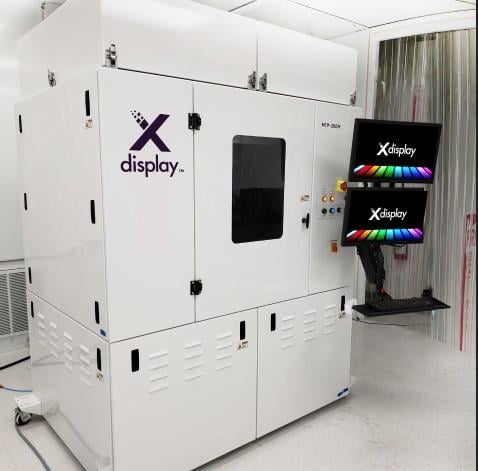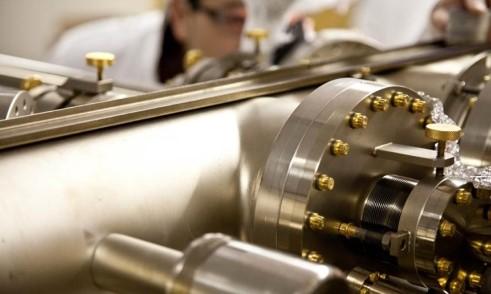Light-emitting diodes (LEDs) are getting smaller, but the process to make them small isn’t easy – at least not yet.
Not unlike many semiconductor technologies, including emerging memory devices, making LEDs smaller is possible, but not always cost effective. The LEDs found in your average flatscreen TV are a mature technology, but manufacturing microLEDs still has its growing pains.
The potential for microLEDs is broad and goes beyond flat panel televisions and smaller displays for smartphones and automotive – there are some interesting medical applications, too.
On the flat screen TV front, LEDs were preceded by liquid crystal displays (LCDs), but even then, they were lit by LEDs. As noted by recent IDTechEx research, both LCDs and organic LEDs (OLEDs) have particular benefits and offer compelling advantages for automotive displays, which have become touch enabled, flexible and seamless.
OLEDs offer high image quality and deeper contrasts and are self-emissive, which means they do not need a backlighting unit (BLU). They also consume less power because they selectively switch off pixels when showing darker regions of an image with finer granularity. Another characteristic that makes OLEDs appealing is flexibility; combined with the fact that they are thinner, OLEDs are an appealing option for sleek automotive displays.
MicroLEDs make automotive moves
OLEDs still make for more expensive TVs. In the meantime, microLED technology is gaining traction in automotive, as IDTechEx predicts they will surpass LCDs and OLEDs in overall performance for automotive displays, which are trending toward sleeker and seamless designs. Thinner and brighter than LCDs, what keeps microLEDs from taking off are cost, technology maturity, and fabrication yields.
IDTechEx technology analyst Miguel El Guendy told Fierce Electronics that there is a lot of enthusiasm for microLEDs, and more importantly, optimism despite the challenges that must be overcome. “There is a lot of potential.” Since LCD technology has been around for four decades, it has had time to mature – it is reliant and resilient, he said. “There's a lot more suppliers now in the LCD market, which drives the cost down as well.”
MicroLEDs must take that same journey to become more cost effective to manufacture. “We’re transitioning,” El Guendy said. There are manufacturers making progress with microLEDs, but the yields remain poor – it is going to take a few more years.
There are big players looking at how to improve microLED manufacturing yields through mass transfer printing. X Display was spun out of X-Celeprint in 2019, and is focused on mass transfer printing, which allows scaling to micron-sized LEDs and to large arrays. Up to millions of devices can be transferred at a time, according to Justin Brown, vice president of operations for X Display. The core competency of the company is how to make materials transfer printable, he said in an interview with Fierce Electronics.

Most LEDs made today are manufactured with older lithography technologies, Brown said, and there is a need for novel approaches to make them smaller and better. The challenge is that as you go smaller, there is a higher number of defects that diminish overall performance, he said.
X Display is not in the business of manufacturing microLEDs itself, although it has in the past. Instead, the company offers the enabling technology to others, said Brown. “The core of our business is to get our mass transfer approach adopted. Then we sell components to folks who are going to utilize that process.” He said X Display has a broad portfolio of patents totaling more than 600.
Better yields require equipment investment
Brown said the challenge for the industry is getting capital investment to modernize LED lithography technology, while making large LEDs has now become commoditized so the margins are thin.
There are signs that investment is happening, Brown said, noting the announcement by Apple and its partners, including Osram, to collaborate on microLED technology. According to Yole Research, display makers, OEMs, startups, and equipment makers have collectively spent US$8 billion on microLED development as of November 2022. The research firm also noted that large companies have been acquiring microLED startups, such as Google snapping up Raxium.
Much of the microLED investment is focused on augmented reality (AR), smartwatches, TV and automotive, according to Yole.

Brown said there are other potential players that could join the fray down the road, including companies in China, but the profitability is not there yet to make the investment. “The jury is still out on whether it can be made profitable,” he said, although microLED manufacturing should be profitable once products flow with it – it will just take a few years. If Apple is successful, then other companies will make the same bet, Brown said.
The mindset of a semiconductor company would benefit the microLED segment, he added, both in terms of capability and cleanliness, as today’s manufacturing environments are not as clean as they could be for making smaller and smaller LEDs.
What will drive innovation and investment is compelling uses beyond better televisions like mobile and industrial applications, and that means going even smaller than microLEDs and down to the nano level.
Getting smaller by starting from the bottom up
NanoLEDs are the focus of Ann Arbor, Michigan-based NS Nanotech, which has strong research roots at University of Michigan and McGill University in Montreal, Canada. CEO and co-founder Seth Coe-Sullivan has watched the evolution of LED technology transform the TV market and power stadium signage at Fenway Park. “That was a pretty noticeable transition for a lot of people.”
Coe-Sullivan said the problem is that is hard to make LEDs smaller using conventional means. “As we go smaller and smaller and higher and higher resolution, efficiency really drops like a rock.” That creates challenges for smartphone displays and AR glasses, he said, which is why NS Nanotech is coming at it from another direction.

Its long-term research is focused on developing the world's first GaN nanoLEDs for both visible RGB displays and invisible UVC light for disinfection by introducing new methods for growing sub-micron-scale red, green, blue, and UVC nano-LEDs from the bottom up directly on a single substrate.
Coe-Sullivan said NS Nanotech is building LEDs from the bottom up. “We can design things that are efficient irrespective of their size because we're scaling up an area instead of trying to cut down an area.” Making a nanowire LED starts out in the order of nanometers, he explained, with one hundred nanowires comprising a microLED.
While many of these nanowire LEDs can be put together to make a large LED device, Coe-Sullivan sees the most compelling applications for nanoLEDs in small devices, particularly AR glasses. His experience using them to date has been that there’s a lot of room for improvement, both from a performance and form factor perspective. “It's not possible with today's technology to design a product that's comfortable to wear for 10 hours on your face.”
Coe-Sullivan said a nanoLED approach offers power efficiency and resolution that is ideal for small displays with high resolution without the need for a bulky battery. “This market really is hardware limited today,” he said. “microLED and nanoLED technology is part of the solution.”
The No. 1 cost is the bill of materials, Coe-Sullivan said. “That's where some hardware innovation can have the biggest impact.”
He said if nanoLED technology can solve AR challenges, it will be a logical choice for direct view displays, whether it is higher resolution signage or televisions. “If we can make small LEDs that maintain their efficiency and make them at reasonable scale, we've got a technology to make affordable TVs out of this.”
There are more noble applications for nanoLEDs than better TVs, however. NS Nanotech is also using its technology for medical use to make emitters of invisible ultraviolet light in the far-UVC wavelength range. This light can be the first line of defense by deactivating airborne viruses before they are breathed in. Coe-Sullivan said this light is a powerful disinfectant that does not penetrate skin and eyes.
No matter the application, what is important is whether this technology can scale, and Coe-Sullivan said NS Nanotech will be publishing research results around its approach that uses electron beam lithography.
For now, however, LCD is the tried-and-true technology for rapidly growing markets like automotive, IDTechEx’s El Guendy said, because it is scalable and reliable, although OLEDs are feasible in premium vehicles.
But microLEDs could be a game changer soon. El Guendy said there are manufacturers that have confided in him that they are getting close to obtaining decent yields. “They're investing a lot, and they have solid partnerships,” he said. “I'm optimistic.”